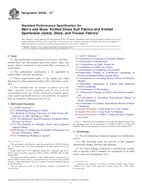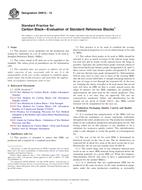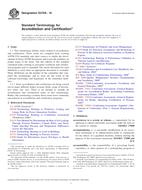1.1 This test method covers the determination of low- temperature flow behavior, through a screen-type test filter, of aviation turbine fuels which can contain separated solids as wax.
1.2 Procedure A employs a 26-[mu]m test filter and is the recommended procedure. Some existing instruments are fitted with a 42-[mu]m filter, and Procedure B is retained to enable their continued use.
1.3 The use of Procedure A (26-[mu]m test filter) with fuels that have a viscosity of greater than 5.0 mm /s (cSt) at -20°C, as determined by Test Method D445, can affect the precision and the simulated freezing point obtained on such fuels and can give a higher (warmer) result than the conventional freezing point obtained by Test Method D2386.
Note 1-The principle of this test method relies on flow through a fine-mesh test filter, and, hence, the result can be affected by the viscosity of the sample. When using Procedure A, a no-flow condition is reached when crystals block the test filter or the viscosity exceeds about 14 mm /s (cSt); sample with a viscosity of greater than 5 mm /s (cSt) at -20°C may exceed the 14-mm /s (cSt) threshold at a temperature before crystals are formed. If viscosity affects the result before crystals are formed, then the reported value of the no-flow temperature of the sample will always be warmer than the actual freezing point, and therefore fail-safe and an indicator of possible flow anomalies at low temperature.
1.4 This standard does not purport to address all of the safety concerns, if any, associated with its use. It is the responsibility of the user of this standard to establish appropriate safety and health practices and determine the applicability of regulatory limitations prior to use.
Product Details
- Published:
- 06/10/1998
- Number of Pages:
- 4
- File Size:
- 1 file , 54 KB


